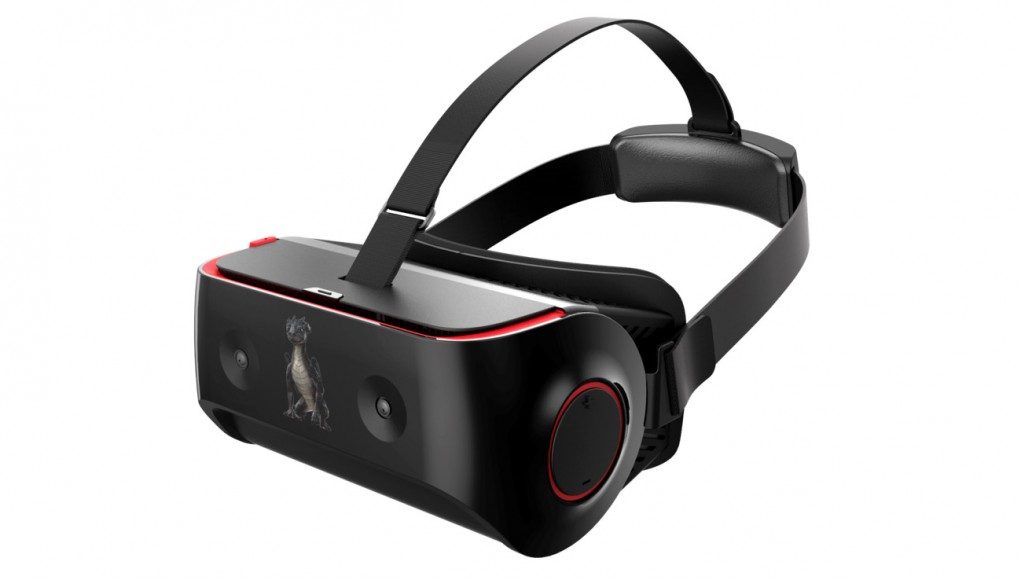For a while now we’ve been waiting for the industry to coalesce around a standard VR hardware platform. Now Qualcomm, a leading semiconductor company which regularly releases smartphone ‘reference’ platforms from which companies build their products, aims to fill that gap in the mobile VR space.
Guest Article by Anshel Sag
 Anshel is currently Associate Analyst at Moor Insights & Strategy where he has multiple areas of coverage including a heavy coverage of VR. His areas of expertise expand outwards towards mobility and client computing which include many of the components inside of modern computers. He has been a believer in VR since the DK1 days but became sold on the current iteration of VR with the HTC Vive prototype.
Anshel is currently Associate Analyst at Moor Insights & Strategy where he has multiple areas of coverage including a heavy coverage of VR. His areas of expertise expand outwards towards mobility and client computing which include many of the components inside of modern computers. He has been a believer in VR since the DK1 days but became sold on the current iteration of VR with the HTC Vive prototype.
While Samsung’s Gear VR headset has been leading the way in mobile VR, it’s based on a smartphone inside of an HMD which has limited capability and cannot be implemented by anyone other than Samsung. So, naturally many companies have been waiting for something like Qualcomm’s new Snapdragon VR820 reference headset to become a reality so that they have a firm starting point for creating their own VR headsets.

The VR820 is arguably a very high-end mobile VR platform with the features that Qualcomm has included. Obviously, not everyone will utilize all of the features of the VR820’s capabilities, but having them available is ultimately what makes a hardware platform a good one. The VR820 is unsurprisingly powered by Qualcomm’s Snapdragon 820 SoC which is undoubtedly also the most popular mobile chip for many of the latest Android flagship devices. In addition to having a Snapdragon 820, the VR820 includes a 2880×1440 AMOLED display that supports up to 70Hz refresh rate.
Additionally, the VR820 has four cameras both inside and outside of the headset that allow it to both do foveated rendering with eye-tracking as well as ‘inside-out’ tracking to allow for positional movement without need for external sensors. Qualcomm claims a 6DOF tracking system with an 800Hz refresh rate using predictive monocular vision to detect head movement and position accurately. In addition to those features, the Snapdragon VR820 also has a claimed motion-to-photon latency of under 18ms which is designed to significantly reduce motion sickness, a major problem in the mobile VR space.
Update (01/09/2016): We’ve learned from a reliable source that the eye-tracking technology present in Qualcomm’s reference VR headset is allegedly provided by german eye-tracking specialists SensoMotronic Instruments (SMI). You may recall our hands-on with their retro-fitted Oculus Rift DK2 gaze detection system at CES this year, and a short time later with Samsung’s Gear VR. The system impressed with its speed and accuracy on both occasions which bodes well for Qualcomm’s system.
The VR820 is an extremely powerful platform for VR because it can harness many of the technologies traditionally used in smartphones and repurpose them for VR. For example, Qualcomm is repurposing their camera ISPs and DSPs for low power functionalities like eye-tracking, hand gestures, 3D reconstruction and passthrough camera visibility.
The Adreno 530 GPU, which is already part of the Snapdragon 820, is capable of running Vulkan and other APIs that can squeeze the most performance and lowest latency out of the hardware. They also have a diverse connectivity portfolio that they can harness including 802.11AC that can make a Qualcomm-based VR solution more quickly connected than other VR headsets. While there was little talk about LTE capabilities, I could see some OEMs possibly pairing the VR820 with a Qualcomm LTE modem for VR media streaming and possibly even mobile gaming.

The one big question that is still left unanswered about the VR820 is whether or not it will support Google Daydream. Upon asking Qualcomm that question they deferred to Google who has not necessarily been forthcoming about what exactly makes a device Daydream capable or Daydream certified. Considering how big of an SoC vendor Qualcomm is, it would be pretty safe to assume that they’ve built this platform with Daydream in mind and we may very likely see Qualcomm have some of the first Daydream devices on the market.
Qualcomm has said that the VR820 will be available in Q4 of this year with commercial devices following shortly thereafter. Because the VR820 is a reference platform, there is no price for the device, but I would expect that a fully spec’ed version of a device based upon it would cost in the ballpark of $500-$600.
Disclosure: My firm, Moor Insights & Strategy, like all research and analyst firms, provides or has provided research, analysis, advising and / or consulting to many high-tech companies in the industry including NVIDIA, Qualcomm and Samsung referenced in this column. I do not hold an equity position in any of the companies mentioned.








